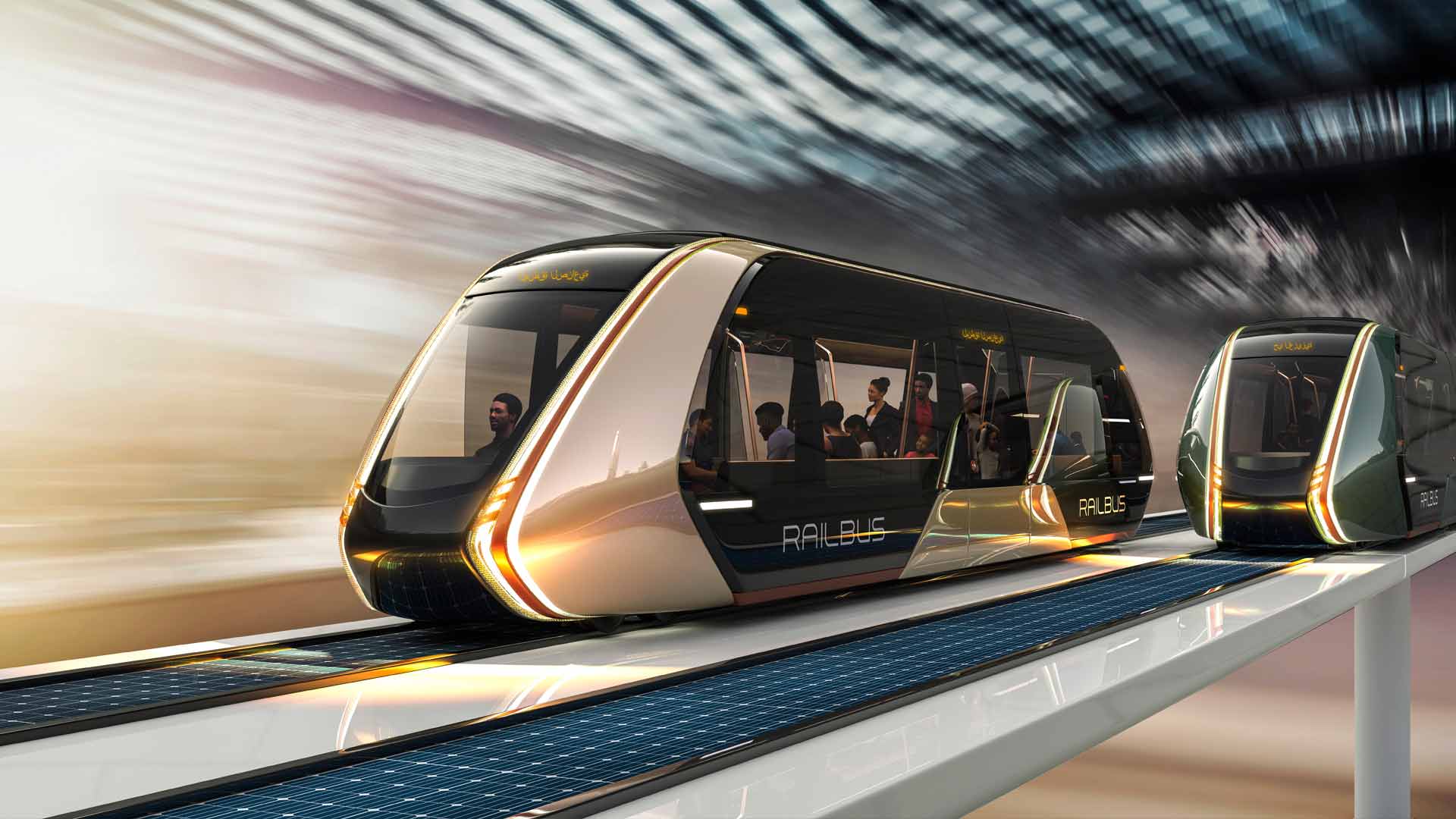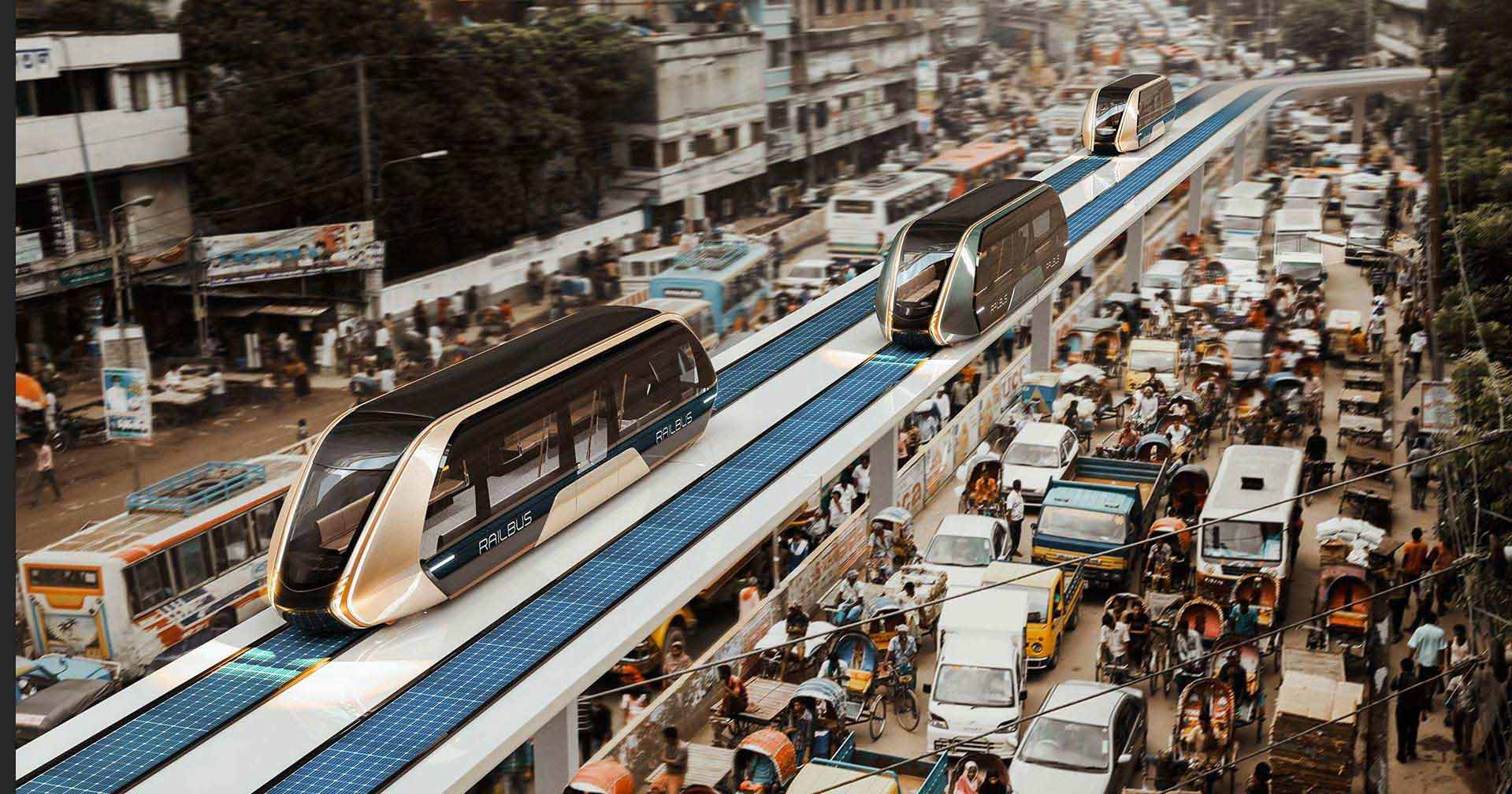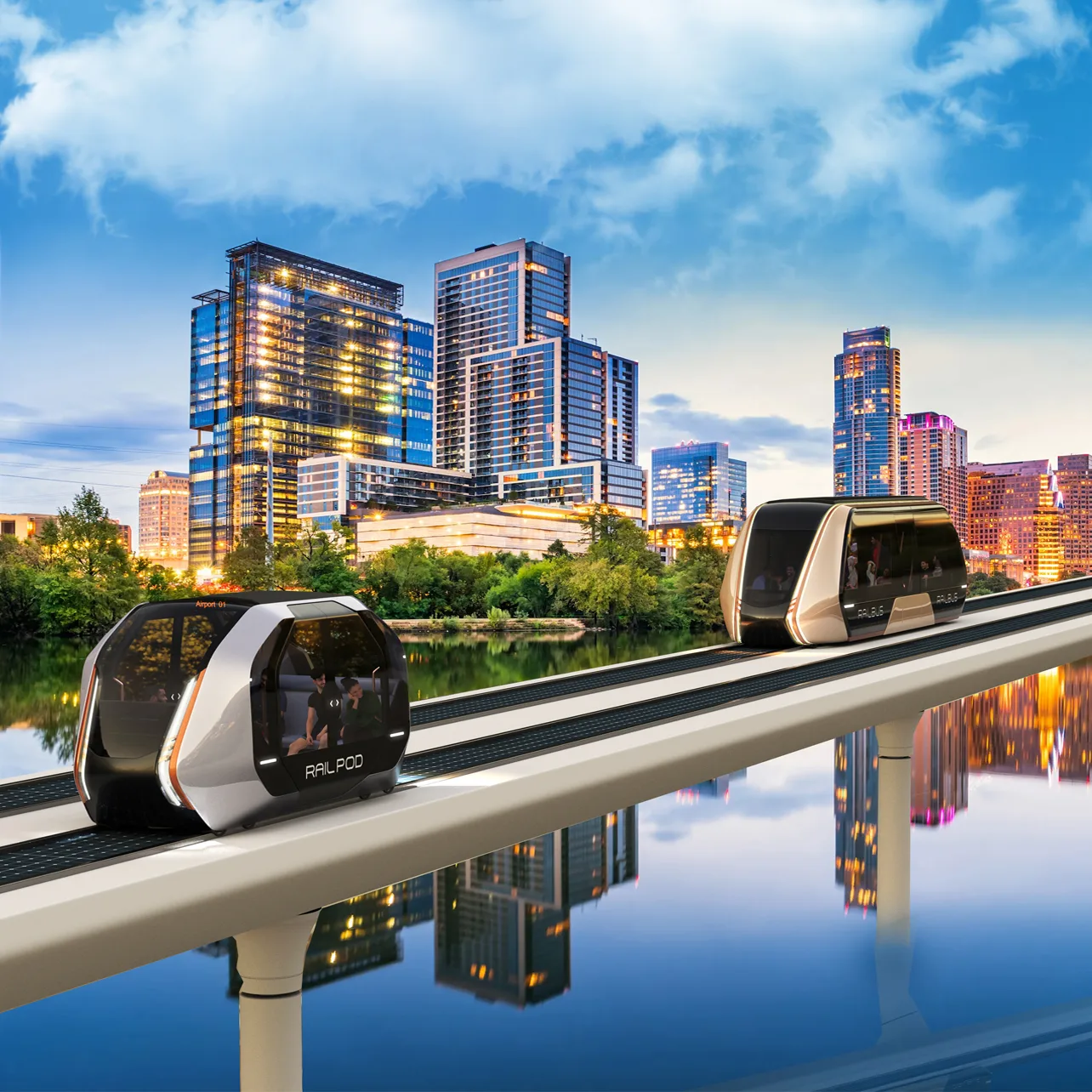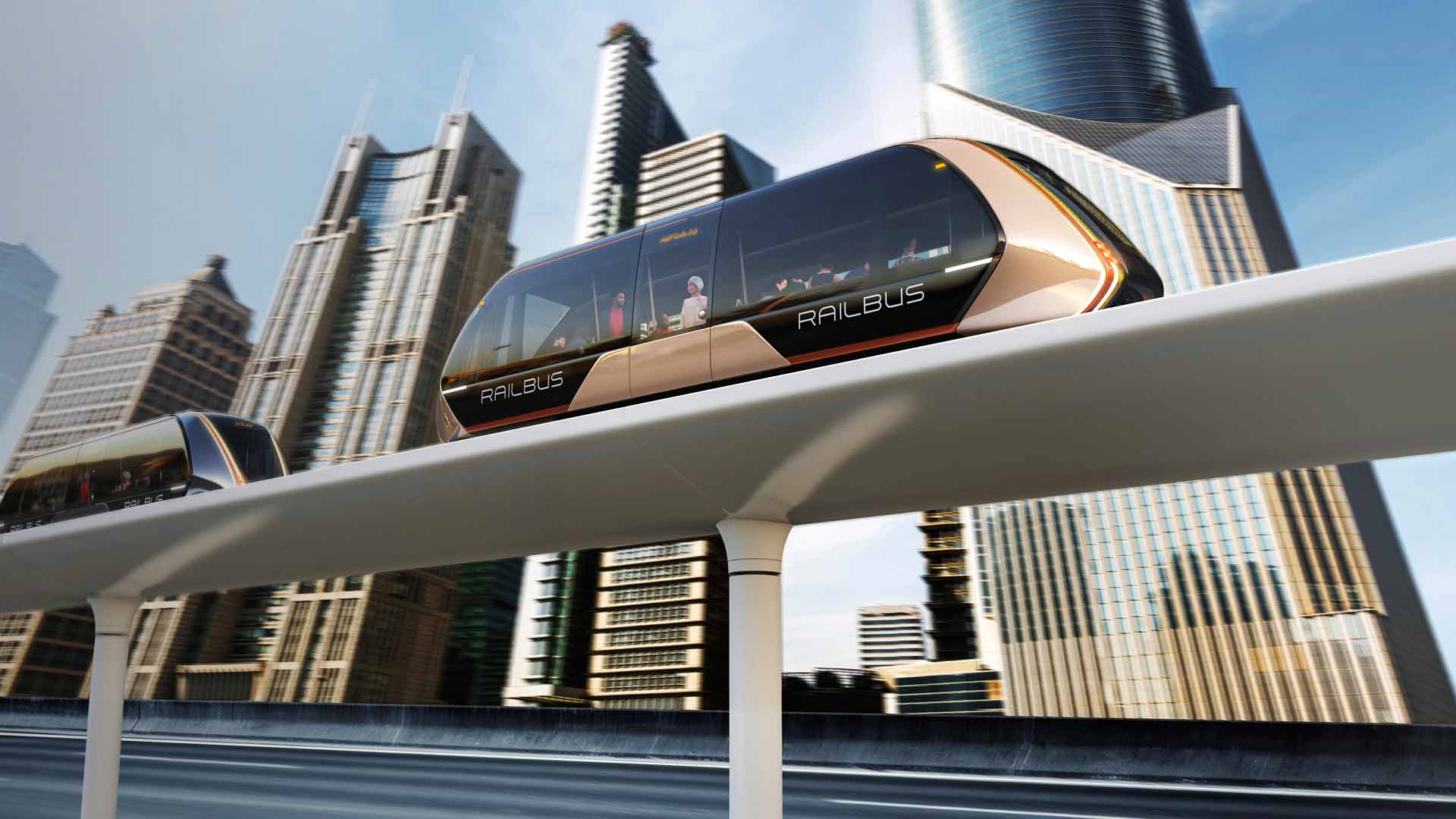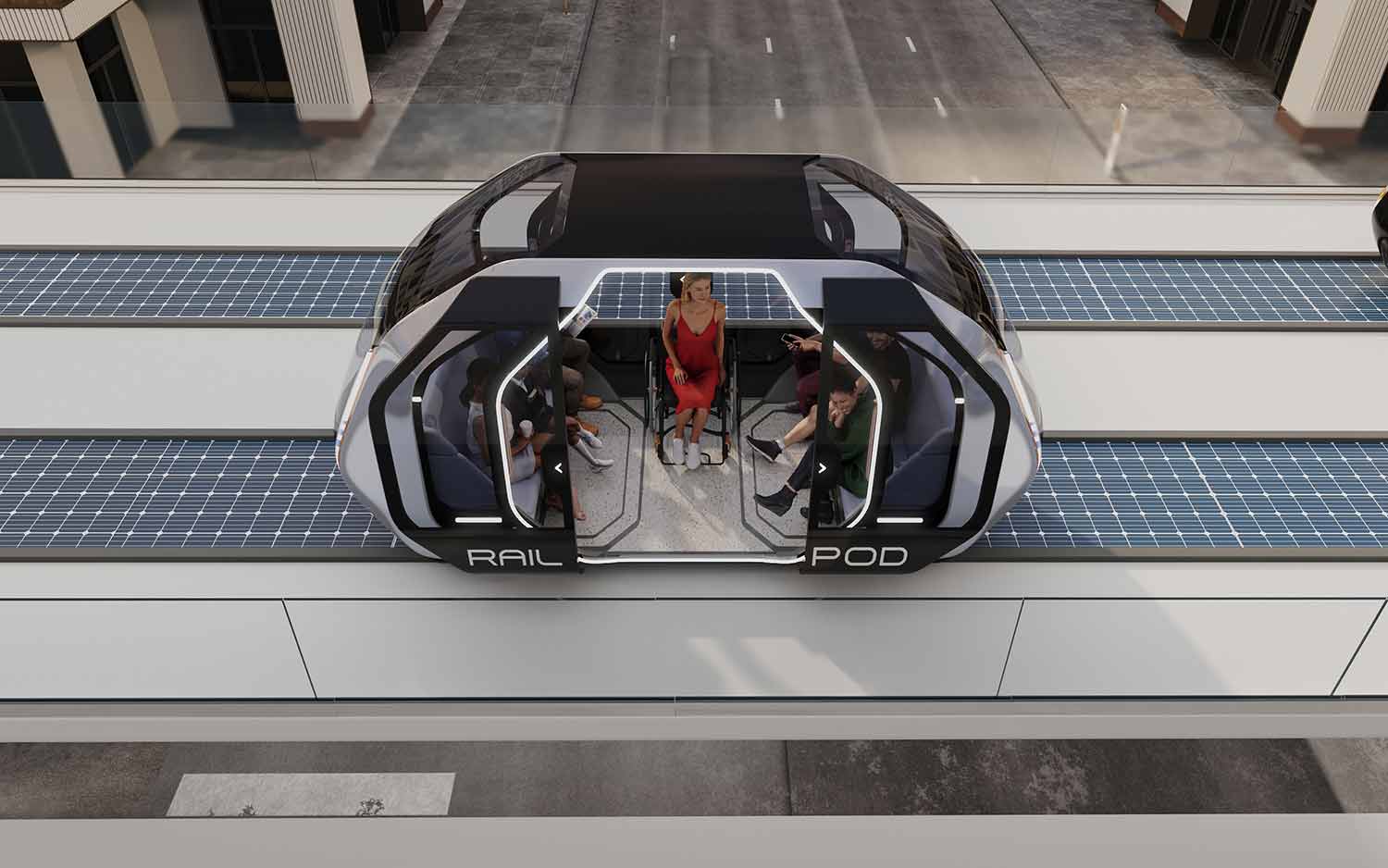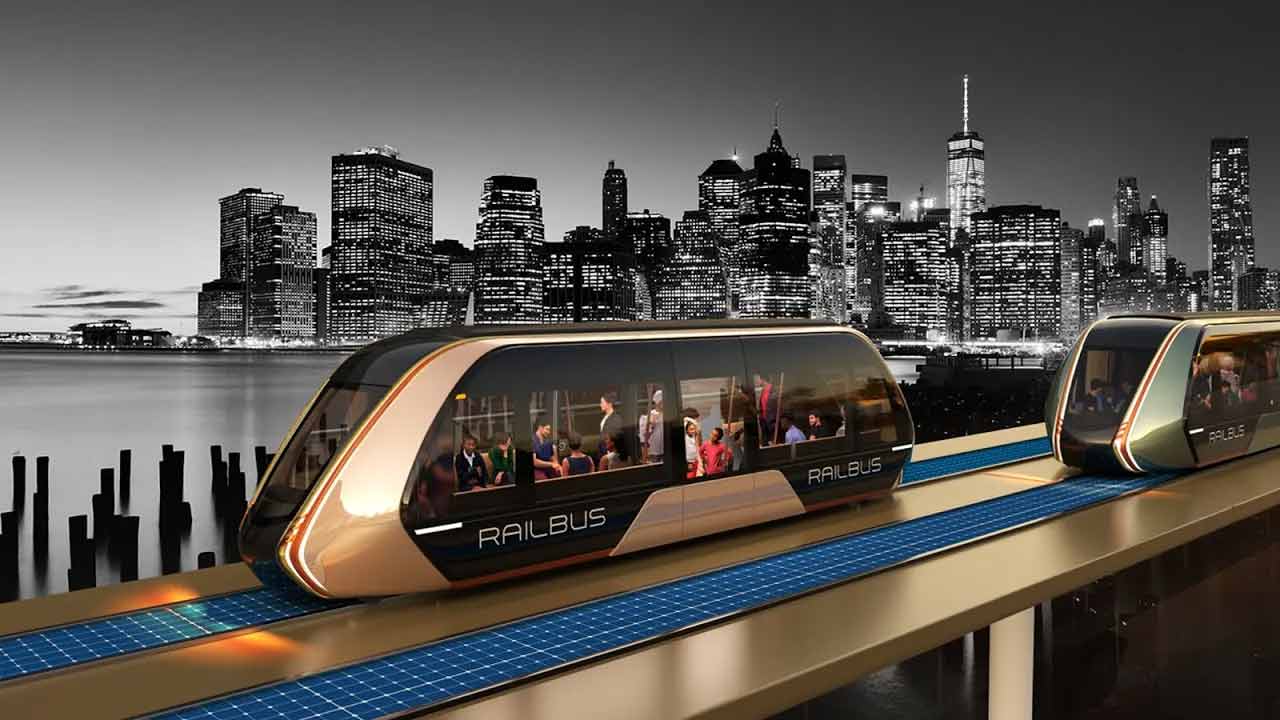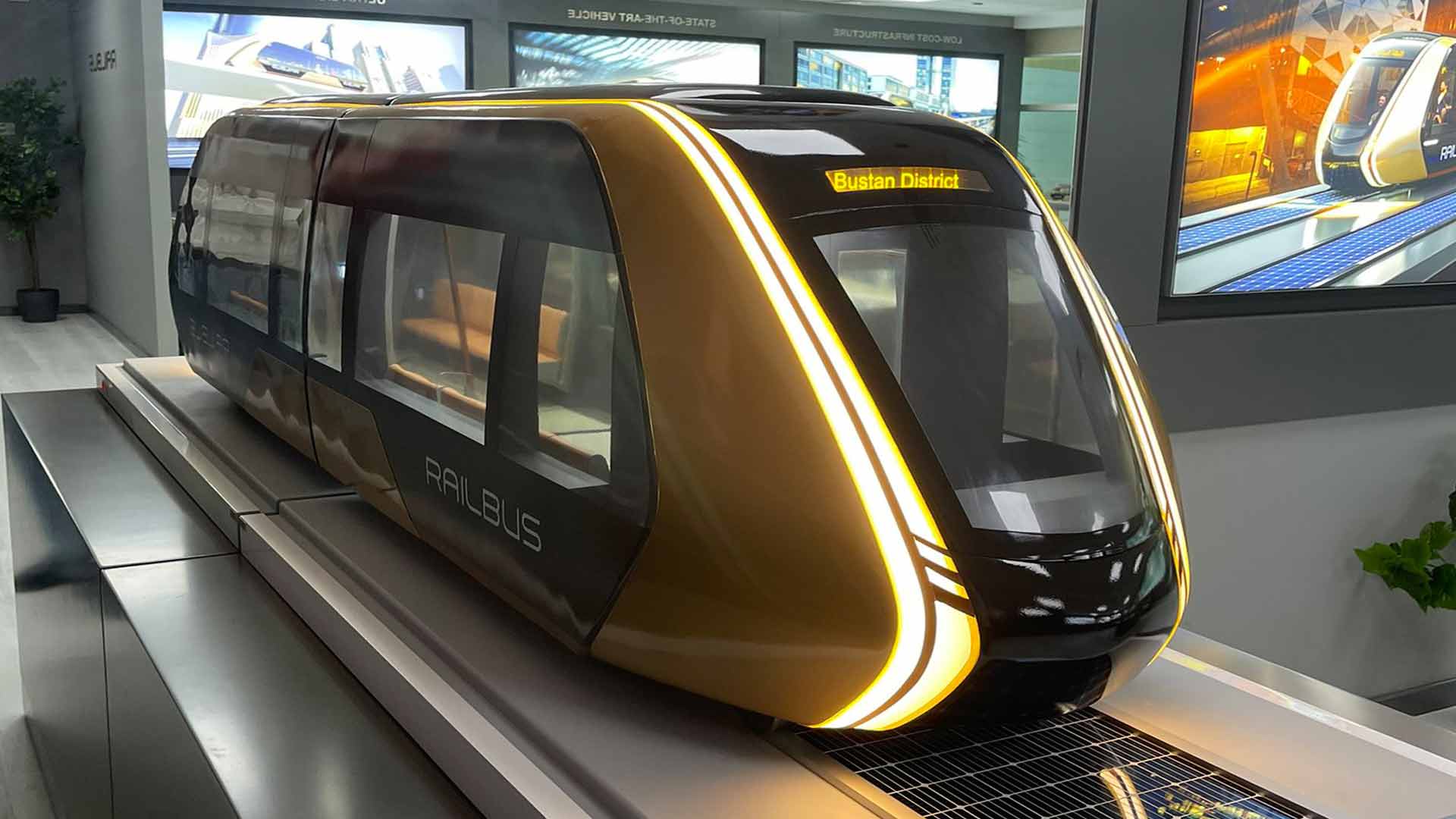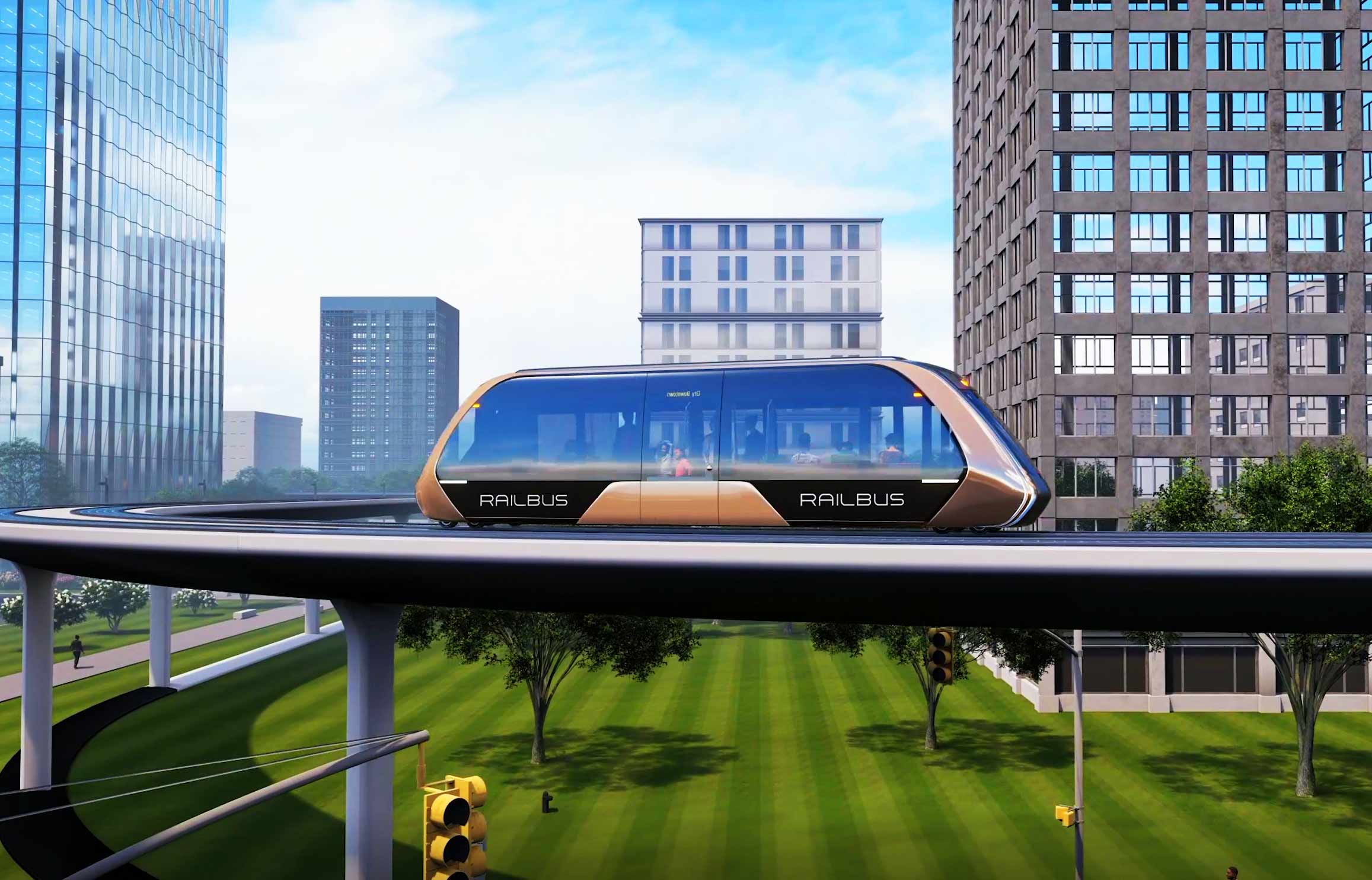All the information on this website is published in good faith and for general information purpose only. blog.medihertz.com does not make any warranties about the completeness, reliability and accuracy of this information.Read Our Disclaimer
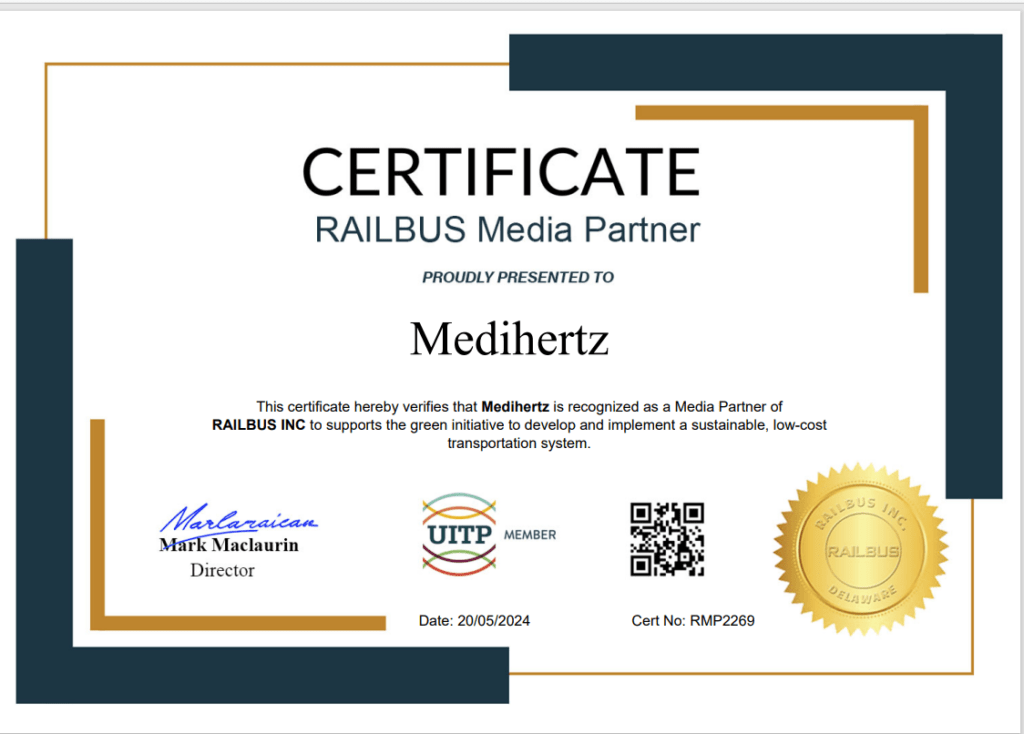
Table of Contents
- Introduction
- Benefits of Railbus Green Mass Transportation in India
- Challenges and Solutions for Implementing Railbus Green Mass Transportation in India
- Environmental Impact of Railbus Green Mass Transportation in India
- Cost-effectiveness of Railbus Green Mass Transportation in India
- Integration of Railbus Green Mass Transportation with Existing Infrastructure in India
- Role of Government in Promoting Railbus Green Mass Transportation in India
- Future Prospects and Expansion Plans for Railbus Green Mass Transportation in India
- Conclusion
Railbus Green Mass Transportation Innovation That India Needs
India, with its rapidly growing population and increasing urbanization, is in dire need of innovative and sustainable mass transportation solutions. One such solution that holds great potential is the implementation of Railbus Green, a mass transportation innovation that can revolutionize the way people travel in the country. Railbus Green combines the efficiency and speed of a train with the flexibility and accessibility of a bus, offering a cost-effective and environmentally friendly mode of transportation. By introducing Railbus Green, India can address its transportation challenges, reduce congestion, lower emissions, and provide a convenient and comfortable commuting experience for its citizens.
Also Read- Podcast Dubbing Services for Driven Companies and Content Creators Targeting 1.4 Billion Indians
Benefits of Railbus Green Mass Transportation in India
Railbus Green Mass Transportation Innovation That India Needs
First and foremost, the Railbus Green Mass Transportation system is environmentally friendly. With the ever-increasing concerns about climate change and air pollution, it is crucial for India to adopt sustainable transportation options. Railbus, powered by electricity, produces zero emissions, making it an ideal choice for reducing carbon footprint and improving air quality in congested cities.
Moreover, the Railbus system offers significant energy efficiency. Compared to traditional buses or trains, Railbus consumes less energy per passenger, making it a cost-effective and sustainable option. This energy efficiency not only reduces operational costs but also contributes to the overall conservation of resources.
Another advantage of the Railbus Green Mass Transportation system is its capacity to alleviate traffic congestion. India’s cities are notorious for their traffic jams, causing immense frustration and wasting valuable time. By introducing Railbus, which operates on dedicated tracks, the system can bypass congested roads and provide a faster and more reliable mode of transportation. This will not only reduce travel time for commuters but also ease the burden on existing road infrastructure.
Furthermore, the Railbus system offers enhanced safety features. With dedicated tracks and controlled access points, the risk of accidents and collisions is significantly reduced. Additionally, the Railbus is equipped with advanced technology, such as automatic braking systems and collision avoidance sensors, ensuring the safety of passengers and pedestrians alike.
In terms of accessibility, the Railbus Green Mass Transportation system is designed to cater to the needs of all commuters. The low-floor design of the Railbus allows for easy boarding and disembarking, making it accessible for people with disabilities, senior citizens, and those traveling with strollers or heavy luggage. This inclusivity ensures that no one is left behind and promotes a more equitable transportation system.
Moreover, the Railbus system offers a comfortable and enjoyable commuting experience. With spacious interiors, comfortable seating, and air conditioning, passengers can travel in comfort, even during peak hours. This not only enhances the overall passenger experience but also encourages more people to opt for public transportation, reducing the reliance on private vehicles.
Lastly, the Railbus Green Mass Transportation system has the potential to boost the economy. The implementation of this innovative system will create job opportunities in various sectors, including manufacturing, maintenance, and operations. Additionally, the increased efficiency and reliability of the Railbus system will attract more commuters, leading to increased economic activity in the areas served by the system.
In conclusion, the Railbus Green Mass Transportation system offers numerous benefits that India desperately needs. From its environmental friendliness and energy efficiency to its ability to alleviate traffic congestion and enhance safety, this innovative mode of transportation has the potential to revolutionize India’s urban mobility. Moreover, its accessibility, comfort, and economic advantages make it a compelling choice for policymakers and urban planners. By embracing the Railbus system, India can take a significant step towards a greener and more sustainable future.
Also Read- Apple Vision Pro Impact On Society
Challenges and Solutions for Implementing Railbus Green Mass Transportation in India
Railbus Green Mass Transportation Innovation That India Needs
One of the major challenges in implementing the Railbus Green Mass Transportation system in India is the existing infrastructure. The country’s railway network is already heavily congested, and adding a new system like the Railbus would require significant modifications and upgrades. This would involve not only expanding the existing railway tracks but also building new stations and platforms to accommodate the Railbus.
Another challenge is the cost involved in implementing the Railbus system. While it is a more sustainable and eco-friendly option compared to traditional buses or cars, the initial investment required for setting up the infrastructure and acquiring the Railbus vehicles can be substantial. However, it is important to consider the long-term benefits and savings that can be achieved through reduced fuel consumption and lower emissions.
In addition to infrastructure and cost, another challenge is the mindset of the people. India has a strong car culture, and convincing people to switch to a mass transportation system like the Railbus can be a daunting task. People are often resistant to change and may be hesitant to give up the convenience and comfort of their own vehicles. Therefore, a comprehensive awareness campaign and education program would be necessary to promote the benefits of the Railbus system and encourage people to embrace it.
To overcome these challenges, several solutions can be considered. Firstly, the government needs to prioritize and invest in the development of the necessary infrastructure. This would involve collaborating with various stakeholders, including railway authorities, urban planning departments, and private investors. By working together, it would be possible to identify the most suitable routes and locations for the Railbus system and ensure that the necessary upgrades are made.
Secondly, the government should explore funding options and incentives to make the Railbus system more affordable and attractive. This could include subsidies for the initial setup costs, tax incentives for companies investing in the system, and discounted fares for passengers. By making the Railbus system financially viable, more people would be inclined to use it, thereby reducing congestion and pollution on the roads.
Lastly, a comprehensive marketing and awareness campaign should be launched to educate the public about the benefits of the Railbus system. This could include advertisements, public demonstrations, and community engagement programs. By highlighting the convenience, affordability, and environmental advantages of the Railbus, people would be more likely to consider it as a viable alternative to private vehicles.
In conclusion, the Railbus Green Mass Transportation system is a much-needed innovation in India’s quest for sustainable and efficient mass transportation. While there are challenges to overcome, such as infrastructure, cost, and mindset, these can be addressed through careful planning, collaboration, and public awareness. By investing in the Railbus system, India can significantly reduce its carbon footprint, alleviate traffic congestion, and improve the overall quality of life for its citizens. It is time for India to embrace this green transportation solution and pave the way for a greener and more sustainable future.
Also Read- How to Manage Pear Pressure in a Healthy Way
Environmental Impact of Railbus Green Mass Transportation in India
Railbus Green Mass Transportation Innovation That India Needs
The environmental impact of traditional modes of transportation, such as cars and buses, is becoming increasingly evident, with rising levels of air pollution and congestion in cities. In this context, the introduction of railbus green mass transportation could be a game-changer for India.
One of the key advantages of railbus green mass transportation is its minimal environmental impact. Unlike cars and buses that run on fossil fuels, railbuses are powered by electricity, making them a clean and green alternative. This not only reduces carbon emissions but also helps in improving air quality, which is a major concern in many Indian cities. By adopting railbus green mass transportation, India can take a significant step towards achieving its climate change goals and reducing its carbon footprint.
Another important aspect of railbus green mass transportation is its efficiency in terms of space utilization. With limited land available in urban areas, it is crucial to make the most of the available space. Railbuses, being smaller in size compared to traditional trains, require less space for their operation. This means that they can navigate through narrow streets and congested areas, providing last-mile connectivity to commuters. By integrating railbus green mass transportation into existing transportation networks, India can address the issue of connectivity and accessibility in a sustainable manner.
Furthermore, railbus green mass transportation has the potential to reduce traffic congestion significantly. As more people opt for railbuses, the number of private vehicles on the road decreases, leading to smoother traffic flow. This not only saves time for commuters but also reduces fuel consumption and emissions associated with idling vehicles. By decongesting roads, railbus green mass transportation can contribute to a more efficient and sustainable transportation system in India.
In addition to its environmental and efficiency benefits, railbus green mass transportation also offers economic advantages. The manufacturing and maintenance of railbuses can create job opportunities and stimulate economic growth. Moreover, the reduced reliance on fossil fuels can lead to cost savings in the long run. As the price of oil continues to fluctuate, investing in railbus green mass transportation can provide a stable and sustainable solution for India’s transportation needs.
However, the implementation of railbus green mass transportation in India is not without challenges. The existing infrastructure needs to be upgraded to accommodate railbuses, including the construction of tracks and stations. Additionally, the mindset of the public needs to shift towards embracing this new mode of transportation. Awareness campaigns and education about the benefits of railbus green mass transportation are crucial to garner public support and encourage its adoption.
In conclusion, railbus green mass transportation is an innovative solution that India needs to address its transportation challenges. With its minimal environmental impact, space efficiency, and potential to reduce traffic congestion, railbuses can revolutionize the way people commute in Indian cities. Moreover, the economic benefits and job opportunities associated with railbus green mass transportation make it a win-win solution for both the environment and the economy. By investing in this sustainable mode of transportation, India can pave the way for a greener and more efficient future.
Also Read- what religion believes in karma
Cost-effectiveness of Railbus Green Mass Transportation in India
Railbus Green Mass Transportation Innovation That India Needs
First and foremost, the Railbus Green Mass Transportation system offers a significant cost advantage over traditional modes of transportation. The construction and maintenance costs of railbus networks are considerably lower compared to building new metro or railway lines. This is primarily due to the fact that railbuses can utilize existing road infrastructure, eliminating the need for extensive land acquisition and construction of new tracks. This cost-saving aspect makes railbus systems an attractive option for cities with limited financial resources.
Furthermore, the operational costs of railbus systems are also significantly lower compared to other modes of transportation. Railbuses are powered by electricity, which is a much cheaper and cleaner source of energy compared to fossil fuels. This not only reduces the carbon footprint of the transportation system but also results in substantial savings in fuel costs. Additionally, railbuses have a higher passenger capacity compared to traditional buses, allowing for more people to be transported at a lower cost per passenger.
Another cost-saving aspect of the Railbus Green Mass Transportation system is its ability to reduce traffic congestion. As cities in India continue to grow, traffic congestion has become a major issue, leading to increased travel times and fuel consumption. By utilizing dedicated lanes and bypassing congested roads, railbuses can significantly reduce travel times and fuel consumption. This not only saves commuters valuable time but also reduces the overall cost of transportation for both individuals and the government.
Moreover, the Railbus Green Mass Transportation system has the potential to generate revenue through various means. For instance, advertising can be incorporated into the design of railbuses, providing an additional source of income. Furthermore, the construction and operation of railbus networks can create employment opportunities, stimulating economic growth in the region. These revenue-generating aspects make railbus systems financially sustainable in the long run.
In addition to its cost-effectiveness, the Railbus Green Mass Transportation system also offers several environmental benefits. As mentioned earlier, railbuses run on electricity, which significantly reduces greenhouse gas emissions compared to traditional buses or cars. This aligns with India’s commitment to reducing its carbon footprint and combating climate change. Additionally, the use of railbuses can help reduce air pollution in cities, improving the overall quality of life for residents.
In conclusion, the Railbus Green Mass Transportation system is a cost-effective and environmentally friendly solution that India desperately needs. Its lower construction and operational costs, ability to reduce traffic congestion, and potential for revenue generation make it an attractive option for cities with limited financial resources. Furthermore, its environmental benefits align with India’s commitment to sustainability. It is high time that India embraces this innovative mode of transportation and takes a step towards a greener and more efficient future.
Integration of Railbus Green Mass Transportation with Existing Infrastructure in India
Integration of Railbus Green Mass Transportation with Existing Infrastructure in India
Railbus green mass transportation refers to a system that combines the efficiency and speed of railways with the flexibility and accessibility of buses. It involves the use of specially designed railbuses that can operate on existing railway tracks as well as on roads. This integration allows for seamless connectivity between different modes of transportation, making it easier for commuters to travel across the city.
One of the key advantages of railbus green mass transportation is its ability to utilize the existing railway infrastructure. India has an extensive railway network that spans across the country, making it an ideal foundation for this innovative system. By utilizing the existing tracks, railbuses can bypass traffic congestion and provide a faster and more reliable mode of transportation.
Furthermore, the integration of railbus green mass transportation with existing infrastructure can help alleviate the burden on overcrowded roads. With the increasing number of vehicles on the roads, traffic congestion has become a major issue in many Indian cities. By diverting a significant portion of commuters to railbuses, the strain on the road network can be reduced, leading to smoother traffic flow and reduced travel times.
Another benefit of this integration is the potential for reduced carbon emissions. Railbuses are designed to be environmentally friendly, with low emissions and high fuel efficiency. By encouraging more people to use railbus green mass transportation, India can make significant progress towards its climate change goals and reduce its carbon footprint.
However, integrating railbus green mass transportation with existing infrastructure does come with its own set of challenges. One of the main challenges is the need for coordination and cooperation between different stakeholders. This includes the railway authorities, road transport departments, and local municipalities. Effective coordination is crucial to ensure the smooth operation of railbuses and the seamless integration with other modes of transportation.
Another challenge is the need for infrastructure upgrades. While the existing railway tracks can be utilized, additional infrastructure such as dedicated railbus stations and terminals may be required. These upgrades will require significant investment and careful planning to ensure that they are implemented efficiently.
Furthermore, public awareness and acceptance of railbus green mass transportation will play a crucial role in its success. Educating the public about the benefits of this innovative system and addressing any concerns or misconceptions will be essential in gaining public support.
In conclusion, the integration of railbus green mass transportation with existing infrastructure holds great potential for India. It offers a sustainable and efficient solution to the country’s mass transportation needs. By utilizing the existing railway network and reducing the strain on roads, railbus green mass transportation can improve connectivity, reduce travel times, and contribute to a greener future. However, overcoming the challenges of coordination, infrastructure upgrades, and public acceptance will be crucial in realizing the full potential of this innovative approach.
Also Read-Not Happy, Don’t come to Work: Chinese Company introduces ‘Unhappy Leaves’. PTO Revolution Begins.
Role of Government in Promoting Railbus Green Mass Transportation in India
The government plays a pivotal role in promoting and facilitating the adoption of Railbus Green Mass Transportation in India. Firstly, the government needs to invest in the necessary infrastructure to support this system. This includes the construction of dedicated rail tracks and stations, as well as the development of maintenance facilities. Without proper infrastructure, the Railbus system cannot operate efficiently and effectively.
In addition to infrastructure, the government must also provide financial support to encourage the adoption of Railbus Green Mass Transportation. This can be done through subsidies and incentives for both the operators and the passengers. By reducing the cost of operating and using the Railbus system, the government can make it more attractive and affordable for the general public.
Furthermore, the government should actively promote and market the Railbus system to create awareness and generate interest among the public. This can be done through various means, such as advertising campaigns, public demonstrations, and educational programs. By highlighting the benefits of Railbus Green Mass Transportation, such as reduced pollution and congestion, the government can encourage people to choose this mode of transportation over traditional ones.
Another important role of the government is to regulate and ensure the safety and quality standards of the Railbus system. This includes setting guidelines for the design and construction of Railbus vehicles, as well as establishing safety protocols and regulations for their operation. By enforcing these standards, the government can instill confidence in the public and ensure that the Railbus system is reliable and secure.
Moreover, the government should collaborate with private sector companies and international organizations to bring in the necessary expertise and technology for the successful implementation of Railbus Green Mass Transportation. This can be done through partnerships and joint ventures, where the government provides the necessary support and incentives, while private companies contribute their expertise and resources. By leveraging the strengths of both the public and private sectors, the government can accelerate the development and deployment of the Railbus system.
Lastly, the government should actively involve the local communities and stakeholders in the planning and decision-making process of Railbus Green Mass Transportation. This can be done through public consultations, workshops, and forums, where the concerns and suggestions of the people are taken into account. By involving the public, the government can ensure that the Railbus system meets the needs and preferences of the people it is intended to serve.
In conclusion, the government plays a crucial role in promoting and facilitating the adoption of Railbus Green Mass Transportation in India. By investing in infrastructure, providing financial support, promoting awareness, regulating safety standards, collaborating with the private sector, and involving the public, the government can pave the way for a sustainable and efficient mass transportation system. With the government’s active involvement, Railbus Green Mass Transportation has the potential to revolutionize the way people travel in India, reducing pollution, congestion, and dependence on fossil fuels.
Future Prospects and Expansion Plans for Railbus Green Mass Transportation in India
Railbus Green Mass Transportation Innovation That India Needs
The current modes of transportation, such as buses and trains, are often overcrowded and contribute significantly to pollution. In this regard, the introduction of railbus green mass transportation could be a game-changer for the country.
Railbus green mass transportation is a revolutionary concept that combines the benefits of both trains and buses. It is essentially a bus that runs on railway tracks, providing a faster and more efficient mode of transportation. This innovation has the potential to transform the way people commute in India, offering a sustainable and eco-friendly alternative to traditional modes of transportation.
One of the key advantages of railbus green mass transportation is its ability to carry a large number of passengers. With its spacious design and multiple compartments, a railbus can accommodate a significantly higher number of people compared to a regular bus. This is particularly beneficial in densely populated cities where overcrowding is a major issue.
Moreover, railbus green mass transportation offers a smoother and more comfortable ride compared to traditional buses. The use of railway tracks ensures a stable and vibration-free journey, reducing the discomfort often associated with bumpy roads. Passengers can enjoy a more pleasant commuting experience, making railbus an attractive option for daily travel.
In addition to its passenger benefits, railbus green mass transportation also has a positive impact on the environment. By utilizing electricity as its power source, railbus significantly reduces carbon emissions compared to diesel-powered buses. This aligns with India’s commitment to reducing its carbon footprint and transitioning towards a greener future.
Furthermore, the introduction of railbus green mass transportation can help alleviate traffic congestion in cities. By utilizing existing railway tracks, railbuses can bypass congested roads and provide a faster and more efficient mode of transportation. This not only saves time for commuters but also reduces the overall traffic load on the roads, leading to smoother traffic flow.
The future prospects for railbus green mass transportation in India are promising. Several cities have already started exploring the implementation of this innovative mode of transportation. For instance, the Indian Railways has initiated pilot projects in various states to test the feasibility and effectiveness of railbus green mass transportation.
The expansion plans for railbus green mass transportation in India are also underway. The government is actively considering the integration of railbus services in major cities and connecting them to existing railway networks. This would create a comprehensive and interconnected mass transportation system, offering seamless travel options for commuters.
However, the successful implementation of railbus green mass transportation requires careful planning and investment. The government needs to allocate sufficient funds for the development of railbus infrastructure, including the construction of dedicated tracks and stations. Additionally, public awareness campaigns and incentives may be necessary to encourage people to switch to this new mode of transportation.
In conclusion, railbus green mass transportation is an innovative solution that India needs to address its growing transportation challenges. With its ability to carry a large number of passengers, provide a comfortable ride, reduce carbon emissions, and alleviate traffic congestion, railbus has the potential to revolutionize the way people commute in India. The future prospects and expansion plans for railbus green mass transportation are promising, but it requires careful planning and investment to ensure its successful implementation. By embracing this sustainable and efficient mode of transportation, India can pave the way for a greener and more connected future.
Also Read- How do Guidance and Discipline Support the Development of Social Skills?
Conclusion
In conclusion, the implementation of Railbus Green Mass Transportation Innovation is a crucial step that India needs to take. This innovative solution can address the challenges of increasing urbanization, traffic congestion, and pollution. By combining the efficiency of railways with the flexibility of buses, Railbus can provide a sustainable and eco-friendly mode of transportation for the masses. It has the potential to revolutionize India’s transportation system, offering a cost-effective and efficient solution that can improve connectivity, reduce travel time, and enhance the overall quality of life for its citizens. Therefore, investing in Railbus Green Mass Transportation Innovation is essential for India’s future development and sustainability.
Source- https://railbus.com/
Free Tools By Medihertz
Follow us on
E Mail us
Donate and support us for this Wonderful Cause.
Your Smallest Effort Can help us
Create a Better World.

Or, Just Pay For A coffee To Medihertz

Further Read
Success is a concept that has been sought after by individuals and societies throughout history. It is often defined as the achievement of one’s goals or the attainment of wealth, fame, or power. However, success can have different meanings for different people. Some may see it as reaching a certain level of financial stability, while others may view it as finding happiness and fulfillment in their personal lives. Regardless of how it is defined, success is a universal desire that drives individuals to work hard and strive for greatness. In this essay, we will explore the various aspects of success and how it can be achieved. Read More
When it comes to enhancing your mental wellbeing, various studies have presented compelling evidence supporting the implementation of five crucial steps. By consciously incorporating these practices into your daily routine, you can effectively elevate your mental health and overall sense of wellbeing. Engaging in these activities has the potential to foster a more positive outlook on life, enabling you to fully embrace its opportunities and experiences. Read More

